Before diving into one of my favorite “wheres,” a brief explanation of how “the where” is noted on the wine label. Virtually all bottle labels carry location of origin – or “where info” – as a matter of course, and the where info that they carry can be general or specific, and national or local rules dictate the parameters of what the where might mean. The where info “Vin de France” doesn’t give a lot of specifics, but the where info “Brunello di Montalcino DOCG” gives extremely specific info about what awaits within, including not only a place on a map, but what grapes are used, aging regimens and so on. In the USA, the term American Viticultural Area (AVA) currently falls somewhere in between these two extremes in most cases, though deeper research can reveal pretty specific details.
In our pursuit of great Cabernet Sauvignon, let’s locate the St. Helena (pronounced helEEna or HelAYna – even an official promotional video uses both) AVA. Picture a map of the United States and imagine that you are slowly zooming in from above – locate California, then Napa County. Within Napa County lies the Napa Valley – a “macro AVA” if you will, that currently contains sixteen sub-AVA’s, divided up by soil types, elevations, sun exposures and so forth. One of those sixteen is St. Helena, located south of Calistoga, East of Spring Mountain District, north of Rutherford and west of Conn Valley in the northern reaches of Napa Valley. Zooming in further, you’ll find some of winedom’s most celebrated producers, from early players Heitz Cellars, Charles Krug, Freemark Abbey, Beringer, Louis Martini, Joseph Phelps and V. Sattui to current stars Duckhorn, Hall and Rombauer, and small artisan producers Corison, Spottswoode, Ehlers Estate, MC4, Pellet Estate and St. Helena Winery. There are famous vineyard sites here as well. Library, Hayne, Kronos, Dr. Crane – even Paso Robles pioneer Jerry Lohr owns a vineyard here – and the list goes on. Such a list speaks to something special going on – but what?
Appellation St. Helena is definitely a hot spot – in more ways than one. The way that matters most to the wine is the actual heat, or average temperature during the growing season. Summers push toward 100 degrees during the long days, but the surrounding hills and mountains channel cool air through the area most nights, sometimes resulting in a temperature swing of more than 50 degrees. The result is fruit that gets beautifully ripe while maintaining the acidity that makes great wine sing. Combine that with gravelly soil types that form the benchlands and foothills where most of the vineyards are, and you’ll get the sense that some of the vineyards can be dry farmed when the season allows, making exceptional aromatic development and deep, concentrated complexity possible. This is particularly evident on the west side of Highway 29 at sites like Spottswoode Estate.
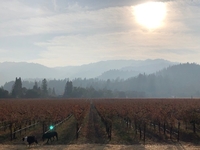
Looking West from the East Side of
Spottswoode Estate Vineyard, St. Helena.
©Rich Cook
Of course, the first variety that we associate with Napa Valley is Cabernet Sauvignon, and that is largely thanks to Appellation St. Helena’s early roots as well as its current offerings. In the mid 19th century pioneers like Charles Krug, Henry Pellet and Dr. George Crane planted the Mission vine variety, and then quickly moved toward European varieties thanks to market pressures and concerns about phylloxera wiping out existing vines. Today in St. Helena Cabernet Sauvignon is king, as they say, and other varieties planted include Cabernet Franc, Merlot, Syrah, Zinfandel and Sauvignon Blanc (the Sauvignon Blanc from the AVA can be stellar). As with most American wines, the bottle label will identify the prominent variety contained within unlike many old-world wine labels that require additional knowledge or research to determine contents. This is not to say that one system is better than another – that’s just where we are at present.
This brings up another point about labeling. Sometimes producers opt to stay with the “macro AVA” designation on a label, with reasons varying from producer to producer, and sometimes
from bottling to bottling. It tends largely to be a marketing decision – until a sub AVA takes on a certain level of caché, it’s often beneficial to stay with the macro AVA from a sales standpoint. I’ve had more than one winemaker tell me that it’s one thing to make wine, and it’s another thing entirely to sell wine, and seemingly small things can make a big difference when it comes to bringing the product to market (particularly when it comes to prospective customers’ spending of disposable income). In Appellation St. Helena, some producers have made the move, while others have stayed with the Napa Valley marque alone as of today. As an example, Cathy Corison added the St. Helena designation to her label beginning with the 2014 vintage, though her non vineyard designated Cabernet Sauvignon contained St. Helena fruit exclusively from the 2009 vintage forward. The AVA was officially designated in 1995. It takes time for a geographical indicator to gain the traction as a sort of “brand” that a winery feels is necessary to help move the product. It also requires governmental approval to change a label, which takes time and resources that small wineries often need to steer toward more important things, like family, business and the wine itself.
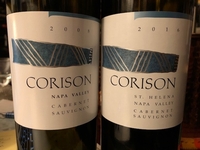
Worldwide, I imagine the hope is that appellation indications, to a degree, will signify a certain quality level. Clearly this is not always the case, though some designations represent a quality indicator more effectively than others. I chose Appellation St. Helena as an example here because I think that it certainly does designate a source location with very high level of quality. Below you will find eight wines from the AVA that all score at least 92 points, including a wine that I scored a perfect 100 – one that is consistently near that mark from vintage to vintage. You’ll find additional reviews of hundreds of wines from producers listed above and several wines specific to Appellation St. Helena in our archives as well, over several vintages dating back to the inception of Wine Review Online. In my view, this fact speaks directly to the high quality of the region. And who knows – it’s foreseeable that St. Helena and other appellations will continue to divide into “micro AVA” designations that parse things out even more. Our good fortune lies in enjoying the journey and discovering the “why” of the “wheres” that explain excellence in wine.
Spottswoode, St. Helena, Napa Valley, California Cabernet Sauvignon Family Estate Grown 2016 ($225): 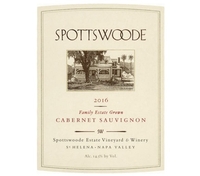
Pulsing with energy and tension between the myriad elements within, this is a wine for the ages – the best I’ve tasted from Spottswoode, and that’s saying something! Winemaker Aron Weinkauf’s deep understanding of the vineyard is realized here, with black and blue fruit, cedar spice box and easy savory notes. The warm 2016 vintage shows zero adverse effect here, with the winery’s typical finessed aromatics translated beautifully and extending into the distance. This is an absolute benchmark of the appellation. Bravissimo! Contains 9% Cabernet Franc and 6% Petit Verdot.
100
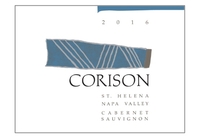
As always, a meticulously structured offering from Cathy Corison, focused on classic varietal aromas and flavors, not jagged or overblown in any way. Blackberry, currants, mild dried herbs and gentle oak spice are already beautifully integrated, so much so that you’ll be tempted to get right into the case. But as with all of the Corison vintages, you’ll want to hold some into the future – they turn into elegant ladies, always reflecting the proprietor herself. Another beautiful personal statement of restraint and insight.
97
Saint Helena Winery, Napa Valley, California Cabernet Sauvignon “Sympa” 2015 ($146):
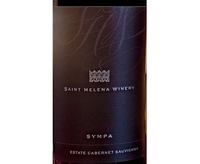
This is a big boy, with full throttle tannins just beginning to loosen their grip. Blackberry pie, fall spice and some fresh tobacco are present in aroma and flavor profiles, and will unwind into powerful beauty over time. A supple finish shows a long future is ahead. Decant well near term, or age a dozen years or so. Contains 1% Petit Verdot.
95
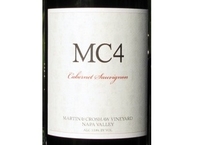 This is a 100% Cabernet Sauvignon from an organically farmed vineyard, presented in generous style by winemaker Victoria Coleman. Full throttle blackberry and black currant fruit is tempered by easy oak spice and gentle toast, with supple tannins keeping the flavors coming through an intense finish. An admirable, handmade beauty.
This is a 100% Cabernet Sauvignon from an organically farmed vineyard, presented in generous style by winemaker Victoria Coleman. Full throttle blackberry and black currant fruit is tempered by easy oak spice and gentle toast, with supple tannins keeping the flavors coming through an intense finish. An admirable, handmade beauty. 94
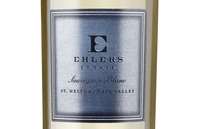 An all-stainless offering from winemaker Laura Diaz Munoz, bringing a complex nose of tart lemon, soft grapefruit and stony minerality. The palate is bright, delivering the nose elements clearly over lively acidity, with good midpalate weight and a crisp finish. A fine solo sipper, or a pairing for salads and seafood.
An all-stainless offering from winemaker Laura Diaz Munoz, bringing a complex nose of tart lemon, soft grapefruit and stony minerality. The palate is bright, delivering the nose elements clearly over lively acidity, with good midpalate weight and a crisp finish. A fine solo sipper, or a pairing for salads and seafood. 94
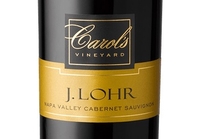
J. Lohr’s philosophy of “dense but soft” when it comes to their red portfolio is currently displayed as dense in this bottling. The soft is just starting to peek out, and that’s a good thing in this boldly structured, black fruit focused wine showing a firm grip that will slowly loosen with time and leave a richly spiced expression that is meant for the table. Cellar this for up to ten years and beyond.
93
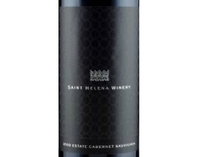
A 100% varietal, ripe side expression from winemakers Aaron Pott and Lindsey Wallingford, with focused cassis and layered spice aromas joined by a little charred oak hint. The palate delivers on the promise of the nose, adding vanilla to the proceedings. Medium grip helps keeps things together, and the finish shows a slight emphasis on the oak spice at present. I’d age this a while or decant well before serving with something beefy.
93
Pellet Estate, St. Helena, Napa Valley, California Cabernet Sauvignon Pellet Vineyard 2014 ($95):
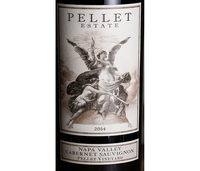 Pellet Estate is a somewhat under-the-radar producer in the Napa Valley, and one worth checking into. This Cabernet Sauvignon shows typical blackberry, currant and earthy spices, solid tannic structure and weight, and a long finish where the spice is forward at present, but will continue to fold in with further aging. Tasty stuff!
Pellet Estate is a somewhat under-the-radar producer in the Napa Valley, and one worth checking into. This Cabernet Sauvignon shows typical blackberry, currant and earthy spices, solid tannic structure and weight, and a long finish where the spice is forward at present, but will continue to fold in with further aging. Tasty stuff! 92
